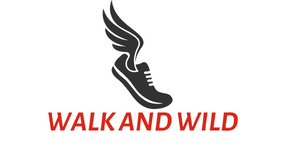How Can Elevation Masks Simulate Altitude Training for Mountain Bikers?

Do you ever wonder how professional mountain bikers prepare for high-altitude races? They incorporate altitude training into their fitness regimen, sometimes using a fascinating piece of equipment called an elevation mask. This tool simulates the thin oxygen levels at high elevations, conditioning the body to perform efficiently in such challenging environments. Let’s delve into this exciting topic.
Understanding Altitude Training
Altitude training, also known as hypoxic training, involves exercising in, living in, or otherwise breathing oxygen-reduced air. It is a common practice among endurance athletes like mountain bikers, aiming to improve their performance in competitions held at high altitudes.
A lire aussi : How to Use Wearable Tech to Optimize Training Loads in Competitive Rowing?
Altitude training works by stimulating the body’s production of red blood cells. Since oxygen is transported around the body by red blood cells, having more of them enhances the body’s oxygen-carrying capacity. However, it’s not always practical for athletes to train at high elevations, and that’s where elevation masks come into play.
The Role of Elevation Masks in Altitude Training
Elevation masks, often referred to as altitude masks, are devices that athletes wear over their mouth and nose during exercise. These masks restrict the amount of air you breathe, mimicking the thin oxygen levels found at high altitudes. In other words, they simulate high-altitude conditions, allowing athletes to reap the benefits of altitude training at sea level.
A voir aussi : What’s the Best Strategy for Developing First Step Quickness in Basketball Guards?
Elevation masks typically have valves that you can adjust to control the amount of oxygen you can inhale. They encourage your body to increase its production of red blood cells, thus enhancing your performance at high altitudes. But what does the science say about elevation masks? Let’s find out.
The Science Behind Elevation Masks and Altitude Training
Studies on the effectiveness of elevation masks yield mixed results. Some studies suggest that they can improve endurance and VO2 max – the maximum amount of oxygen an individual can utilize during intense exercise. Other research indicates that these masks might only boost the strength of respiratory muscles, without significantly enhancing endurance or VO2 max.
A 2016 study published in the Journal of Sports Science & Medicine found that wearing an elevation mask during high-intensity interval training, or HIIT, improved the subjects’ performance and VO2 max over six weeks. However, a 2020 study in the International Journal of Exercise Science found no significant improvements in endurance or VO2 max after six weeks of similar training with an elevation mask.
In other words, while some evidence suggests that elevation masks can help improve certain aspects of physical fitness, more extensive research is needed to fully understand their effects on performance.
Integrating Elevation Masks into Your Training Regime
If you’re a mountain biker looking to incorporate an elevation mask into your training regime, here are some tips to consider. First, start by setting the mask to the lowest altitude setting and gradually increase it as your body adapts to the restricted oxygen levels. This approach can help minimize the risk of negative side effects like dizziness and shortness of breath.
Next, consider wearing the mask during different types of workouts. While studies have primarily focused on HIIT workouts, anecdotal evidence suggests that using the mask during strength training sessions or long endurance rides can also be beneficial.
Lastly, remember to listen to your body. While an elevation mask can simulate high-altitude conditions, it’s crucial to remember that training at actual high altitudes involves more complex physiological changes. If you feel unwell during a workout, take off the mask and breathe normally.
Potential Benefits and Risks of Elevation Masks
Like any fitness tool, elevation masks come with potential benefits and risks. On the one hand, these masks can strengthen your respiratory muscles and potentially improve your VO2 max and endurance. They can also make your workouts more challenging, pushing your body to work harder and adapt.
On the flip side, elevation masks can also cause discomfort and potential risks. Restricting your breathing during intense workouts can lead to shortness of breath and light-headedness. If you have any underlying health conditions, particularly related to your heart or lungs, it’s crucial to consult with a healthcare professional before using an elevation mask.
In conclusion, elevation masks are a fascinating tool that can simulate altitude training for mountain bikers. While scientific findings are mixed, many athletes swear by these masks for their potential to enhance performance in high-altitude environments. As always, if you’re considering integrating an elevation mask into your training, it’s crucial to do so under professional guidance to ensure safety and effectiveness.
Practical Applications of Elevation Masks for Mountain Bikers
Mountain bikers who are serious about their performance in high-altitude environments may find value in incorporating elevation masks into their training routine. It’s worth noting that the use of these masks isn’t limited to simulating high-altitude conditions; they can also add a layer of difficulty to regular workouts, thus pushing your body to adapt and grow stronger.
For a mountain biker, this can be particularly beneficial in terms of enhancing stamina and endurance. For instance, if you’re training for a race that involves long, uphill climbs, using an elevation mask can help your body get used to the kind of oxygen deprivation you might experience during the actual race.
That said, it’s crucial to incorporate the masks into your training regime in a gradual and controlled manner. Start off by using the mask on its lowest setting during your warm-up sessions, and as your respiratory muscles get stronger, you can gradually increase the duration and intensity of your workouts. Moreover, it’s recommended to alternate between sessions with and without the mask to prevent over-fatigue.
Remember, the ultimate goal of using an elevation mask is not to make your workouts unbearable, but to help your body adapt to high-intensity activities under oxygen-deprived conditions. As always, don’t forget to monitor your heart rate during these workouts, and consult with a fitness professional to ensure that you’re using the mask correctly and safely.
Conclusion: The Verdict on Elevation Masks for Altitude Training
The use of elevation masks as a tool to simulate altitude training for mountain bikers is a topic that has sparked both interest and debate. While some studies indicate potential benefits like improved endurance and VO2 max, others suggest that these benefits may be limited to strengthening respiratory muscles.
Moreover, the effectiveness of an elevation mask can vary significantly depending on the individual and their training regimen. For instance, an amateur biker who is new to altitude training may experience more significant benefits from using a mask compared to a seasoned athlete who has already undergone extensive altitude training.
Nevertheless, the advantage of elevation masks lies in their ability to bring the conditions of high altitude training to sea level, making this type of training more accessible for athletes around the world. Plus, they can add a layer of challenge to regular workouts, pushing athletes to work harder and adapt.
It’s important to remember that while an elevation mask can simulate the conditions of high-altitude training, it doesn’t replicate all the physiological changes that occur when training at actual high altitudes. Therefore, if you’re a mountain biker preparing for a race at a high elevation, it’s still recommended to train in similar real-world conditions whenever possible.
In summary, while elevation masks may not be a magic bullet for improving performance, they can certainly be a valuable tool in a mountain biker’s training arsenal when used correctly and safely. As always, any changes to your training regime should be done in consultation with a fitness professional to ensure they align with your overall fitness goals and health considerations.
